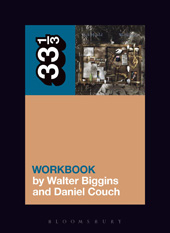2017 - Bloomsbury Publishing
E-book
Digital Version
Streaming only | NO download | NO Copy/paste | NO Printing
Bob Mould's Workbook
160 p.
- In 1989, Bob Mould took a left turn. Already legendary before his 30th birthday for his noise-and-nuance work in Hüsker Dü, Mould had recently walked away from his old band. He re-emerged with his debut solo album: Workbook. Filled with chiming acoustic guitars, multitracked vocals, pristine production, and even a cello, Workbook was both admired and questioned for Mould's perceived departure from his post-punk roots. Three decades later, the album has emerged as a key for understanding the nascent alternative rock genre and the concerns Mould would explore for the duration of his career. Fusing post-punk sound and confessional lyrics with a richer emotional and musical range, Mould's Workbook merged worlds that seemed unbridgeable at the time. Alternative rock emerged from the wreckage of the 1980s, and Workbook was a model for the genre's maturation. Workbook serves its title in two ways-as a map for musicians to follow into a new mode, and as a journal of Mould's struggle toward adulthood. It opens convers
- ations about rock, identity, spirituality, authenticity, and the perils and promises of mainstream culture. Walter Biggins and Daniel Couch, two critics who grew up with Workbook, extend these conversations-through letters and emails to each other, and through correspondence with Mould and Workbook's musicians and producers. That crosstalk leads to, through this seminal album, a deeper understanding of "alternative rock" at the moment of its inception, just before it took over the radio. [Publisher's text].
- Special access authorizations may apply; please contact us for further information.
-
Information
ISBN: 9781501321368
SERIES
DISCIPLINES


